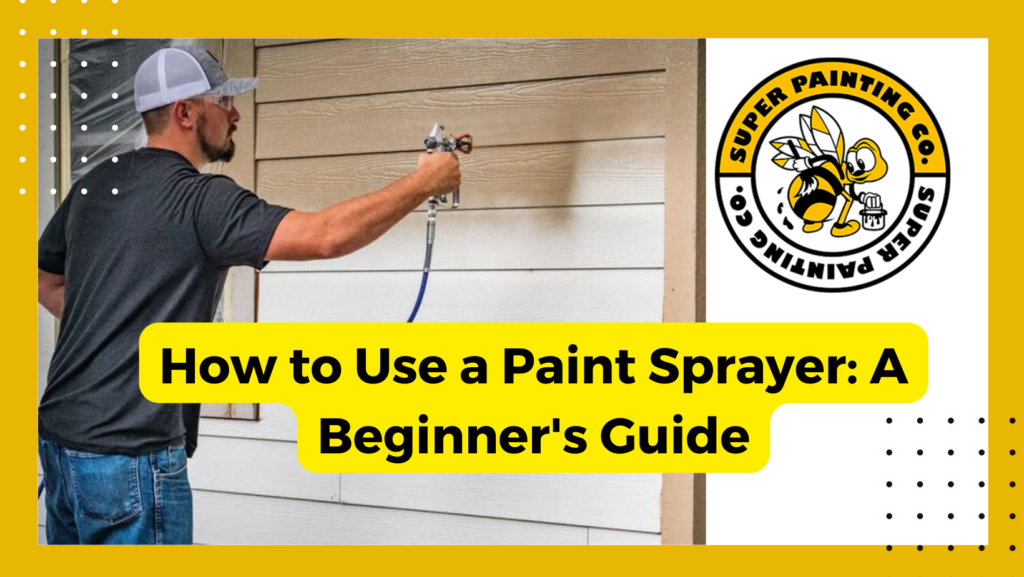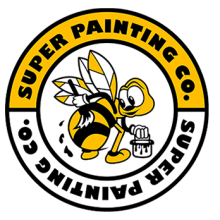Are you tired of the endless hours spent with a paintbrush or roller in hand, dreaming of a faster way to give your walls, furniture, or fences a fresh coat of paint? Well, the good news is that you’re not alone, and there is a solution: a paint sprayer! In this article, we’re going to walk you through the basics of how to use a paint sprayer and make your painting projects a breeze.
Understanding the Types of Paint Sprayers
Before you embark on your paint-spraying journey, it’s crucial to familiarize yourself with the different types of paint sprayers available. Each type has its unique features and is suited for specific applications. Let’s take a closer look at the three main types: airless, HVLP, and pneumatic paint sprayers.
Airless Paint Sprayers
Airless paint sprayers are a favorite among DIY enthusiasts for their simplicity and versatility. Unlike some other sprayers, they don’t rely on an air compressor, making them accessible and user-friendly. How do they work? Well, airless sprayers employ an electric pump to force the paint from a container, through a hose, and into the spray gun. From there, the paint is propelled out of the sprayer tip, covering your target area. This method offers efficient coverage and works well for a wide range of projects.
HVLP Paint Sprayers
High-Volume Low-Pressure (HVLP) paint sprayers, on the other hand, use a different approach. They rely on an air compressor to push the paint through a hose and into the spray gun nozzle. What’s unique about HVLP sprayers is the low-pressure air stream that combines with the paint as it’s released from the tip. This creates a fine, mist-like spray pattern, which is excellent for achieving a smooth, professional finish. However, HVLP sprayers may not be the best choice for thicker paint products, such as latex.
Pneumatic Paint Sprayers
Last but not least, we have pneumatic paint sprayers, which share some similarities with HVLP sprayers. These devices also utilize an air compressor to push paint through a hose and into the spray gun. However, instead of mingling with a low-pressure air stream, the paint is ejected directly through the nozzle at high velocity. This makes pneumatic sprayers a top choice for automotive painting, where precision and speed are essential. Additionally, they are versatile enough to handle a wide variety of interior and exterior painting tasks.
Now that you’re well-acquainted with the different types of paint sprayers, you can confidently choose the one that best suits your project. Whether it’s the simplicity of an airless sprayer, the finesse of an HVLP sprayer, or the speed of a pneumatic sprayer, there’s a perfect fit for every paint job.
Selecting the Right Tip
One of the most crucial elements to consider when setting up your paint sprayer is selecting the right tip. This small yet vital component plays a significant role in controlling the width and speed of the spray, ensuring the perfect finish for your project. The selection of your tip can make all the difference, so let’s explore some essential tips about, well, tips!
Paint sprayer tips come in a variety of sizes, typically starting at 0.009 inches. The size of the tip increases in increments of 0.002 inches. Here’s a general guideline to help you navigate the vast world of tips:
Fine Tips (0.009 inches to 0.013 inches): These fine tips are your go-to choice when working with thin liquids such as stains and lacquers. They create a precise and even application for those delicate finishes.
Medium Tips (0.015 inches to 0.019 inches): Medium tips are the all-rounders and the most commonly used. They are perfect for oil-based and latex paints, offering a balanced spray pattern and consistent coverage.
Larger Tips (0.021 inches and more): When dealing with heavy latex paints, elastomeric coatings, or block fillers, larger tips step up to the plate. They provide the necessary flow for these thicker materials, ensuring your project goes smoothly.
Remember, the right tip is your key to success, and selecting the appropriate one for your specific project can save you time and frustration down the line. So, don’t underestimate the power of a perfectly chosen tip; it’s your secret weapon for achieving a flawless finish.
Now that you know everything about paint sprayer, here’s how to start your project.
Gather Your Materials
Once you have your paint sprayer ready to go, it’s time to gather your materials.
1. Paint: Ensure your paint is properly mixed and strained to remove any impurities.
2. Safety Gear: Don’t skimp on safety. You’ll need safety goggles, a respirator mask, and clothing you don’t mind getting paint on.
3. Drop Cloths or Tarps: Protect your surroundings from paint splatter.
4. Painter’s Tape: Mask off areas you don’t want to paint, like trim and windows.
5. Tools: Have some basic tools on hand for disassembling the sprayer, cleaning, and any minor adjustments.
Prep Your Surface for Paint Sprayer
The key to a professional finish is proper preparation. Here’s what you should do.
1. Clean: Ensure your surface is clean, free of dust, dirt, and grease.
2. Repair: Fill any holes, cracks, or imperfections in the surface.
3. Sand: Lightly sand the surface to create a smoother canvas for the paint.
Setting Up the Paint Sprayer
Now, let’s get to the fun part: setting up the paint sprayer. Follow these steps.
Thin the Paint (if necessary): Some sprayers require you to thin the paint to the right consistency. Check the sprayer’s user manual for guidance.
Prime the Sprayer: Fill the sprayer’s paint cup or container, and then prime the sprayer according to the manufacturer’s instructions. This usually involves running some paint through the sprayer to remove air and ensure an even flow.
Adjust the Spray Pattern: Most paint sprayers allow you to adjust the spray pattern. Choose between a horizontal, vertical, or circular pattern, depending on your project and preferences.
Adjust the Pressure: You can usually adjust the pressure on the sprayer for a finer or coarser spray. Test on a piece of scrap material to find the right pressure for your project.
Painting with Your Sprayer
Now that your sprayer is ready, it’s time to get painting.
Maintain a Consistent Distance: Hold the sprayer about 12-18 inches away from the surface, moving your arm in a smooth, even motion. Keep the distance consistent for an even coat.
Overlap Strokes: When painting, overlap each pass by about 50% to ensure full coverage.
Practice on Scrap: If you’re new to paint sprayers, practice on a piece of scrap material first to get a feel for the machine.
Cleaning Your Paint Sprayer: After you’ve successfully completed your project, don’t forget to clean your paint sprayer thoroughly. This step is crucial to prevent clogs and ensure the longevity of your tool. Follow your sprayer’s cleaning instructions carefully.
Bottom Line
Using a paint sprayer can significantly speed up your painting projects and provide a professional finish. With the right sprayer, proper setup, and a bit of practice, you’ll be well on your way to becoming a paint-spraying pro. So, say goodbye to those tedious brush strokes, and hello to the world of efficient, even painting with a paint sprayer. Happy painting!
Ready to Transform Your Space? Contact Super Painting Company Today!
At Super Painting Contractors, we’re not just about paint; we’re about transforming spaces, bringing dreams to life, and adding vibrancy to your world. Whether you have a residential or commercial project, our team of skilled professionals is here to make it happen.
With our dedication to quality, attention to detail, and a commitment to customer satisfaction, we’re ready to take your project to the next level. Don’t wait to see the difference we can make; get in touch with us today to discuss your painting needs and schedule your next masterpiece. Your dream space is just a call or click away!





